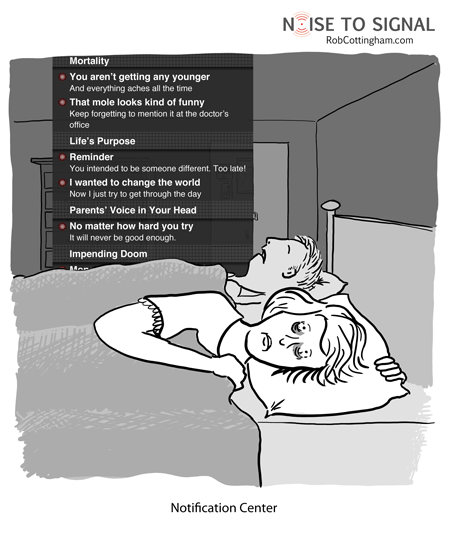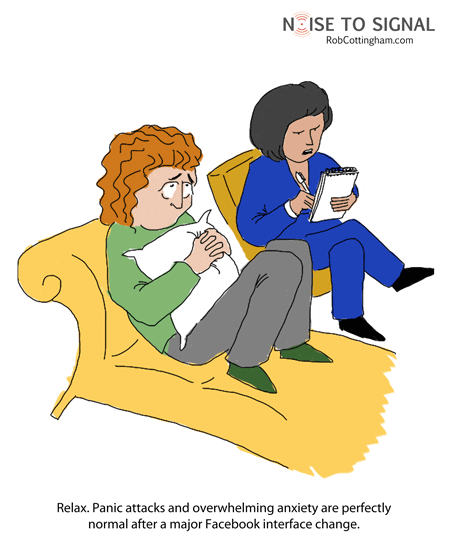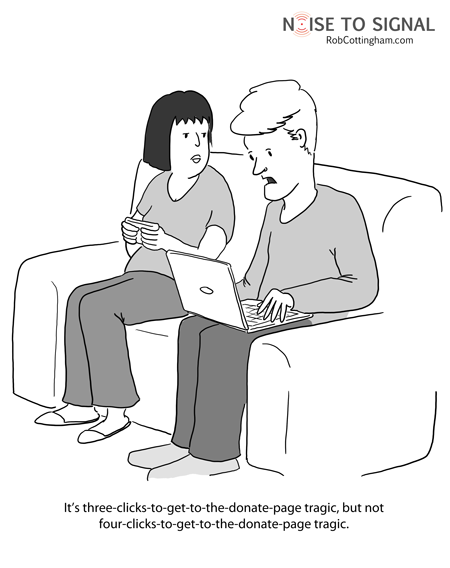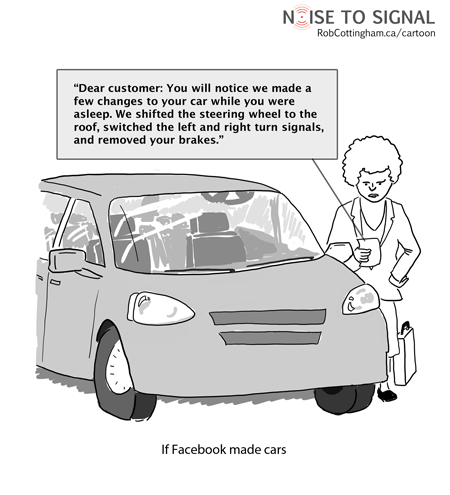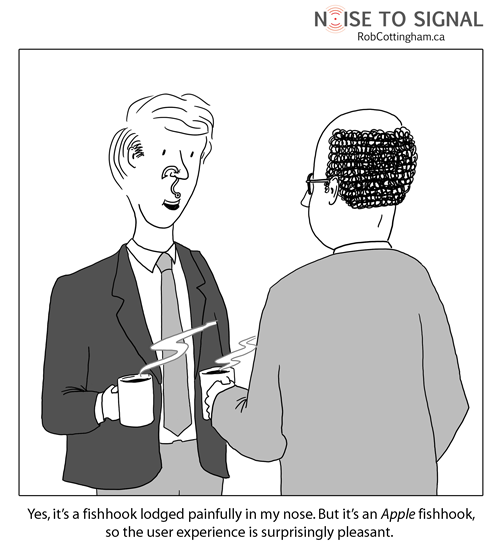I’m not sure when it happened. But at some point my laptop and smartphone stopped being places of work, creativity, conversation and leisure, and started being the dashboard of a highly-strung car. Suddenly, I’m surrounded by notifications.
Three new email messages. Five things just happened on Facebook. Four people have mentioned, DM’d or retweeted me on twitter. Six Google+ alerts. LinkedIn on the iPhone now feels the need to notify me that I can always check it to see what my contacts are up to. (That has to be the ultimate meta-reminder: an app reminding you that it still exists.)
And if I still don’t feel like I have the pulse of my system at my fingertips, I can install a shareware utility to notify me of all sorts of involuntary muscle movements on the part of my operating system and applications. “Backup complete.” “Word just updated itself.” “Photoshop just completed peristalsis.”
And it’s all too much. Because every one of those notifications conveys the same red-badged “deal-with-me-NOW” sense of extreme urgency, whether it’s a DM that my house is on fire and I should do something about it, or the announcement of the new Rabid Parakeet in Angry Birds. When everything’s important, nothing’s important.
The first few times I experienced notifications, I felt like the Terminator, with that cool heads-up display constantly alerting me to my surroundings, feeding me tactical data. After a while, though, it just feels like being 10 years old in the back seat with a pesky sibling who keeps poking you in the side.
Besides, once I have badges on my iPhone apps with numbers like “62” on them, the game is lost anyway, and all that those notifications are doing is rubbing salt into the wound.

